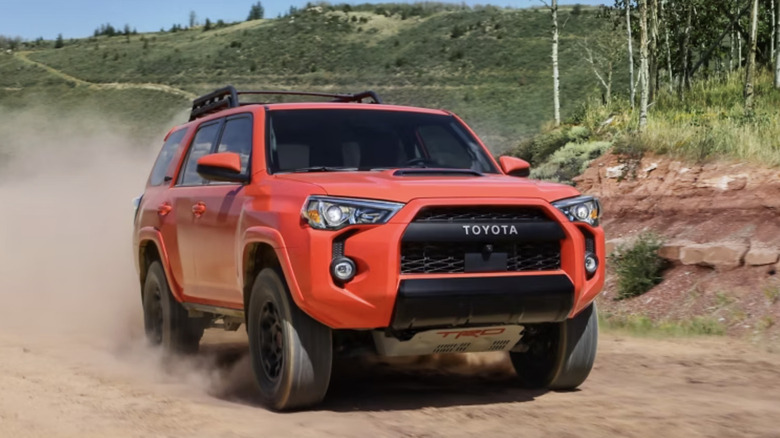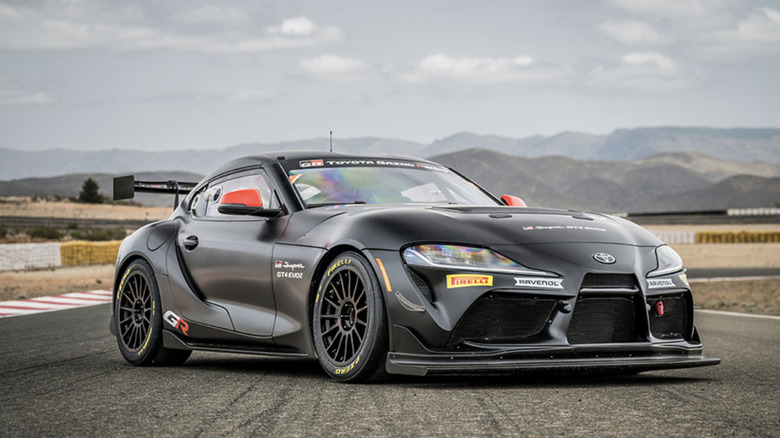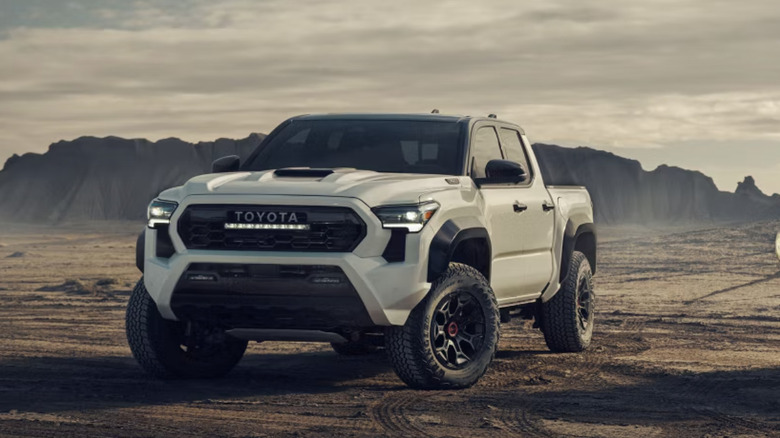What's The Difference Between TRD And GR, Toyota's Racing And Performance Brands?
A performance sub-brand can prove a longstanding and valuable asset for an automaker's profitability. It serves as a form of exclusive shop window for high-class, high-performance products from the manufacturer for customers looking to have a more exotic driving experience. Yet Toyota decided to provide its consumers with double the variety in performance sub-brands when it launched its Toyota Gazoo Racing ("TGR," or "GR") sub-brand in 2017. At the time of the launch the company had been reaping the consistent rewards of the established Toyota Racing Development ("TRD"), which has served as the racing development branch since 1979.
With two active "racing" divisions at play many have raised concerns that Toyota consumers won't be able to tell the difference between the two sub-brands or that there will be a lot of overlap in their functions. Fortunately the former is readily apparent to the naked eye. TRD has built a solid reputation for crafting enhancing trims and packages for Toyota models on the market, while GR models feature a sleeker, cutting-edge shape and design endemic to the racing circuit. To answer the second question involves a closer look comparing key factors such as the scope of their operations, pricing, and the quality of the technology and materials.
GR has gone global while TRD stays close to home in North America
If you were to ask a random passerby on the street, chances are that they have not even heard of Gazoo Racing. That's because Toyota's latest sub-brand has mainly serviced Japan and the rest of the global market under the direct supervision of company chairman Akio Toyoda. GR has positioned itself at the forefront of factory-approved street racing and motocross engineering, earning international acclaim at events such as the World Rally Championship and World Endurance Champion. Only in the last couple of years did Toyota begin introducing a select few GR models into the U.S., including the GR Supra in 2020 which received nation-wide praise. More recently the 2024 Toyota GR Corolla earned very high reviews as well as SlashGear's Editor's Choice for being 2024's hottest hatchback.
Meanwhile Toyota Racing Development still remains the more popular and recognizable sub-brand in the North American markets. Specifically, TRD has established a successful track record for delivering factory-approved tuning services and off-road upgrades for Toyota's trucks — a class GR does not have expertise in given that demand for trucks on the global scale is much smaller compared to the U.S. Case in point, the fairly new 2024 Toyota Tacoma TRD Pro has also earned SlashGear's Editor's Choice for its seamless fusion of powerful hybrid technology and off-road durability. Furthermore, TRD continues to excel as a premiere tuning division in a broad range of domestic racing competitions from NASCAR to Baja.
GR takes the lead in technology & cost
Even though both sub-brands may be able to coexist within their own spheres of performance, there still lies the question of how else can customers really tell TRD and GR products apart? For one, there is a stark contrast when it comes to comparing price tags. Looking at the TRD lineup for 2024 the division's home website has spotlights on the Tacoma, Tundra, and 4Runner — all hefty off-road vehicles with starting prices of $31,500, $39,965, and $40,705 respectively. Meanwhile GR's current lineup includes the 2024 GR86, 2024 GR Corolla, and the newly announced 2025 GR Supra, each of which in turn cost $29,300, $36,500, and $56,250. Setting aside the fact that each group contains vastly different classes of car, the GR overall is more expensive than TRD models with an average hike in price of roughly $3,293.
Beyond the price tag, another factor to consider is the specific configuration of gadgets and materials in these sub-brands. For example, when considering the TRD Tacoma the majority of its attractive features like the multi-terrain select system with crawl control, TRD off-road suspension, and electric-locking rear differential, are all geared toward elevating the vehicle's endurance and industrial strength under tough outdoor conditions. On the other hand, GR models use cutting-edge technology engineered specifically for maximizing performance on the road. The 3.0-liter 382 horsepower engine with 6-speed or 8-speed transmission, Brembo brakes, and adaptive variable suspension of the GR Supra epitomize the division's mission to blend the sleek racetrack-ready design with a driver's daily commute. Bottom line — both the TRD and GR sub-brands offer next-level quality and exclusive performance for the avid Toyota customer — it all really comes down to what kind of "exclusive performance" the customer is looking to experience.


